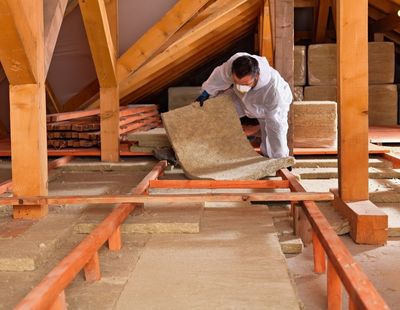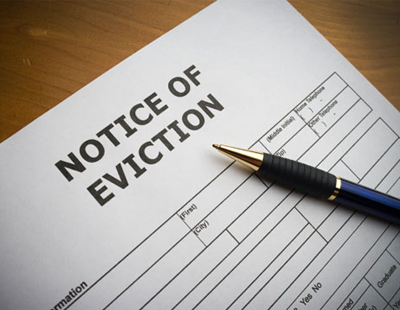Rolling out emergency insulation this winter in the nation’s draughtiest homes could save tenants or other residents £260 a year.
That’s the claim of the New Economics Foundation which says basic measures like loft and cavity wall insulation in every available home could be achieved for 77 per cent of the public money being spent on the energy price guarantee.
The government has frozen the energy price cap at £2,500 for a typical household for the next two years. The report finds that this will cost £35.5 billion. But only £330m extra a year has been allocated to upgrading leaky, draughty housing.
The New Economics Foundation says the government could kick-start an emergency insulation programme with £3.6 billion and complete it with £27 billion.
The government has set a target for all UK homes to be upgraded to decent energy efficiency levels by 2035, but insulation rates have dropped in the last decade.
If insulation rates had kept pace with their 2012 peak, almost all homes would be at Energy Performance Certificate C by now.
The research finds that, had all homes been upgraded over the last decade, families in England and Wales would be saving £530 a year on their average energy bills. In addition, the government would be saving £3.5 billion on freezing the price cap in over six months, making the price cap freeze 10 per cent cheaper for England and Wales.
NEF research claims that not only would insulating and upgrading homes save families and the government money, it would also improve energy security.
If all homes had been upgraded to EPC C, today England and Wales could reduce their expensive gas imports by at least seven per cent.
The UK’s annual greenhouse gas emissions would have fallen by the equivalent of the annual carbon footprint of Leeds, Bristol and Bradford combined (9.2 tonnes), the research finds.
Some 68 per cent of homes in the UK – nearly 19m – do not meet decent energy efficiency standards. Government data shows that 5.2m homes have no cavity wall insulation and 7.9m have substandard or no loft insulation.
The NEF says simple, affordable, and easy-to-install measures like loft and cavity wall insulation, draught proofing, thermostatic radiator valves and smart thermostats have a major impact on energy bills. It would cost £1,158 on average to install these in a typical semi-detached house, which would slash energy bills by £273 over a year annually. Under current energy prices these costs would pay for themselves in savings in five years.
NEF recommends that the government kick-start an emergency insulation programme to subsidise basic, affordable insulation measures in the nation’s draughtiest homes.
Heather Kennedy, senior organiser at the New Economics Foundation, says: “The government knows that families will be agonising over turning the heating over the next few months. But they’re refusing to consider the simple solution that would keep families warm this winter and in the winters to come: installing basic emergency insulation in our draughtiest homes. Instead of spending money on new temporary support each year, that only lands in the pockets of big energy companies, we could instead invest in making all our homes well-insulated and heated by clean, green energy — whether we rent a flat or own a castle.”
Want to comment on this story? Our focus is on providing a platform for you to share your insights and views and we welcome contributions.
If any post is considered to victimise, harass, degrade or intimidate an individual or group of individuals, then the post may be deleted and the individual immediately banned from posting in future.
Please help us by reporting comments you consider to be unduly offensive so we can review and take action if necessary. Thank you.





(2).jpg)
Landlord-400x310.png)









.jpg)



.png)






Join the conversation
Jump to latest comment and add your reply
A bit of loft and wall insulation and every property becomes a 'C' ? I wish
Loft insulation is relatively cheap & easy to install - and yet I have had two sets of tenants decline my offer to do it for them!
Yes it is not always clear cut. I've been lucky with one of my houses and the son is a window fitter. I have now had all the windows replaced at just the cost of the windows.
I have offered to purchase extra loft insulation and have asked the tenant to give me a rough size to the loft in order for me to purchase the required amount. It's been 2 months now and still no reply.
I’ve had similar from tenants. A little reminder of who actually owns the property brings them back down to earth. (It’s not theirs yet) it’s in our interest to get the C69 figure or it will cost us down the line
Poorly or inappropriately installed insulation causes mold and rot so can be harmful to both the occupier and the structural integrity of the building.
Very few , if any tenants would understand this.
I'm always sceptical about these claims. Often I see it as stoping DIYers. Putting loft insulation is pretty straightforward.
If you use slabs of insulation on the outside of your building this is more of a specialist job.
Cold bridges can occur, especially if you have something like concrete guttering, but in general terms insulation in your homes is a good thing and you can save a fortune doing it yourself. I know it's not for everyone though!
I do agree, but a lot of people don’t know that a gap is needed at the eves, and the loft needs airflow, some will simply stuff the insulation everywhere they feel air !!
In the days before Theresa May's disastrous energy cap (wonder if a rent cap would be just as successful?) I found that departing tenants were usually on the highest "standard" tariffs and had hardly ever made any effort to reduce their bills by seeking out lower fixed tariffs.
It's therefore not surprising that few would make any effort to reduce current bills with extra insulation.
How do you insulate Stone built properties with no cavity without costing fortunes creating an internal cavity.. And in a block of flats its kinda pointless...
Seems government can subdisise energy companies and cap prices but cannot subsidise landlords but stop rent rises despite our interest cost going up.
Please login to comment